While driving home from work several months ago, MU pre-medical student Chris Rundle noticed an individual slumped over on the side of the road. He stopped and went to help the unconscious man.
Rundle didn’t know the exact cause of the man’s condition, but he would later learn he was witnessing an opioid overdose. He called 911 and performed CPR until paramedics arrived and used naloxone to resuscitate the man. Naloxone is a life saving medication that reverses the effects of an opioid overdose. Still, Rundle lamented that the easy-to-use medication isn’t more readily available and better-known in Missouri, a state that experienced 1,581 fatal opioid overdoses in 2021, including 34 in Boone County, according to the Missouri Department of Health and Senior Services’ Drug Overdose Dashboard.
![Chris Rundle stands by the side of road while cars drive by on Wednesday, May 3, 2023, along Old 63 in Columbia. “[The overdosing individual] was unconscious, and it was definitely scary,” Rundle said. “I’ve been CPR trained, and I’ve gone through a lot of other trainings in terms of first aid and all that, but to be in the scenario for the first time was really jarring.”](https://npr.brightspotcdn.com/dims4/default/09efbf7/2147483647/strip/true/crop/2000x1088+0+0/resize/880x479!/quality/90/?url=http%3A%2F%2Fnpr-brightspot.s3.amazonaws.com%2F9a%2F1a%2Fa29bc8ca41a0bd5ba5cee78baaf0%2F20230502-chrisrundle-bas-233.jpg)
“You’re never going to be able to really get rid of the opioids in our community. It’s going to be really tough,” Rundle said. “But the first step is going to be being able to save those individuals that do have an overdose.”
In a historic step on March 29, the Food and Drug Administration approved Narcan, a 4 milligram naloxone hydrochloride nasal spray, for over-the-counter, nonprescription use. People need no formal medical training to administer naloxone, and Narcan packages come with quick start guides explaining how to give someone a dose.
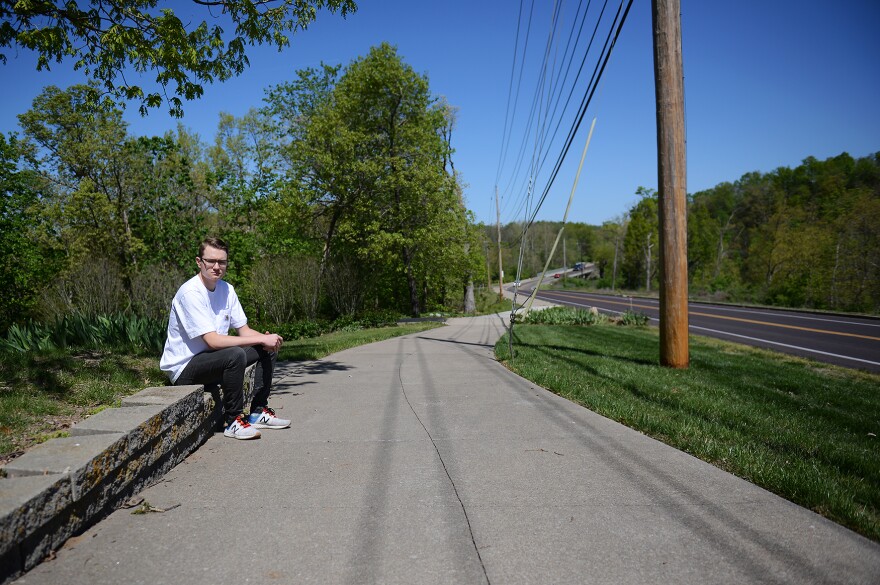
In the time it took between Rundle pulling over and professionals arriving, he estimated nearly 100 cars drove by. Only two stopped to offer assistance.
Rundle said he wishes he’d had naloxone when he’d provided aid during the stranger’s overdose, and he now keeps Narcan in his backpack. As Narcan’s availability increases, Rundle said more people should begin carrying the medication so they too can help in case of an emergency.
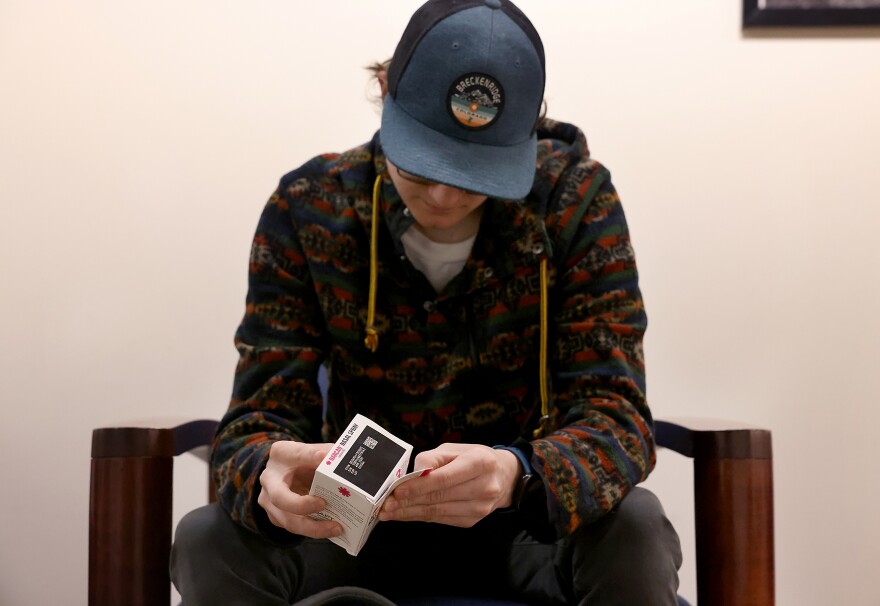
“I hope my story is very rare coming in the future,” Rundle said. “I just hope that others in the community learn about Narcan, learn about what’s going on in the community and stay up to date so that they can also save someone else’s life.”
Following this experience, Rundle attended a local naloxone education and distribution event where he learned about signs of an opioid overdose, overdose prevention and how to administer Narcan. Columbia/Boone County Public Health and Human Services, in collaboration with the Boone County Overdose Response Coalition, regularly hosts these Save-a-Life trainings.
At the end of each free-to-the-public presentation, attendees, like Rundle, receive a pack of two free doses of Narcan.

The goal of Save-a-Life events, and the Boone County Overdose Response Coalition as a whole, is to make naloxone more available, promote collaboration among community agencies, educate the public and, as the name implies, help save lives.
“There’s some people who, because of their lives, may be in more direct contact with people that may need Narcan,” said Ryan Sheehan, a spokesperson for Columbia/Boone County Public Health and Human Services, who helps during these trainings. “But potentially, regardless of your walk of life, we would like to educate you (on) how to use Narcan because you never know, and it’s best to be prepared.”

Naloxone itself is not a drug. It is not addictive and does not cause euphoria. Rather, the medication has the power to reverse an opioid overdose by blocking the effects of opioids, according to the CDC. While naloxone is only effective in opioid overdoses, administering it during a non-opioid overdose will not cause harm. When stronger opioids like fentanyl, which is 50 to 100 times more potent than morphine, are involved, multiple doses of naloxone may be required, according to the CDC.
“It just takes a few grains (of fentanyl), the weight of a snowflake, to be a fatal overdose,” said Heather Harlan, who presented during an April Save-a-Life event.
Harlan is a community health educator with Columbia/Boone County Public Health and Human Services. Her work focuses on overdose response and adult mental health, and she said the department recognizes that everyone in the community is at risk for witnessing an opioid overdose.
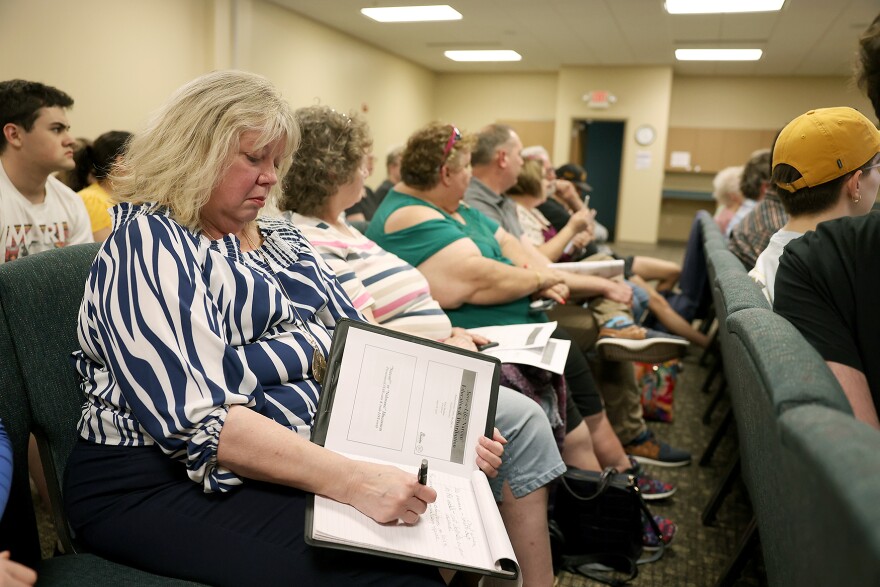
Addiction recovery and ‘limited sobriety’
MU student Kelaiah Killmade said they are glad the FDA has approved Narcan for over-the-counter sale. During their childhood and early adolescence, Killmade felt “no sense of control” anywhere in their life. Killmade first tried alcohol before the age of 10 and started drinking by 13. Less than two years later, Killmade began smoking marijuana “pretty frequently” with friends. Through their upperclassmen dealers, Killmade bought and started experimenting with other substances including LSD, Adderall and codeine.

Eventually, this led to them developing an addiction to their drug of choice: prescription opioids.
During their “active addiction,” Killmade said they came close to overdosing but never had to go to the hospital. They recalled witnessing another opioid user overdose and be revived with naloxone nasal spray. The paramedics said the man who overdosed would have died without the medication. Killmade did know people who died from opioid overdoses, however, including their second cousin who passed away from a heroin overdose when Killmade was 15 years old.
“I can’t even remember the first time I tried painkillers, but I mean, it was around 15. But eventually I started stealing them from my grandpa just to sustain my addiction,” Killmade said. “I don’t know if I really even felt anything the first time, and then I took them a second time and it was great. I mean, it was euphoric. It was like kind of when you’re about to fall asleep for a nap and you’re in and out of dreams, but 10 times better.”
While the high was addictive, Killmade said the withdrawal was awful. Killmade recalled bringing their grandpa a cup of coffee one day, and their hands were shaking so much that hot coffee kept spilling on them.
Still, Killmade kept using prescription opioids until they were caught.
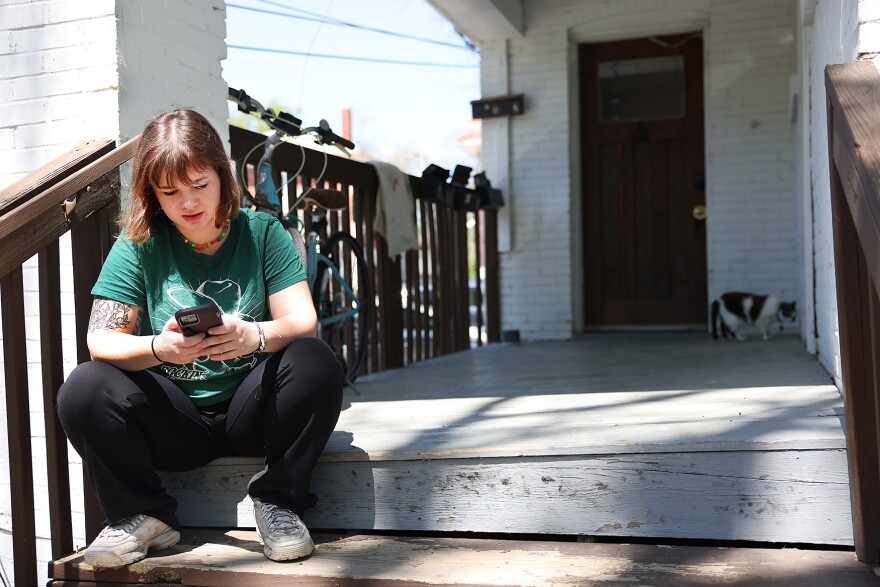
When they were 16, Killmade’s school found prescription opioids in their backpack. The administration suspended Killmade for two weeks and required they go through outpatient rehab as an alternative to facing legal action. Although Killmade was in therapy during much of their adolescence, Killmade said they weren’t always honest with mental health professionals. It took Killmade years and multiple relapses — though never with opioids — before achieving their current level of sobriety.
Now, at 23 years old, Killmade sees themselves as an ex-addict with “limited sobriety.” Killmade is nonbinary and uses they/them pronouns but said, first and foremost, they are a sister and a daughter. They love brunch and sushi, animals and the color orange. They enjoy watching firefighter shows and the latest season of “Ted Lasso.”
While Killmade is not sober in the traditional sense of the word — still drinking alcohol and occasionally experimenting with illicit substances — Killmade has not used painkillers in their adult life. Even though their history of addiction will never vanish, Killmade said having a “really big community of people,” especially their family, who support and encourage them helps them continue to have a healthier relationship with substances and not use prescription opioids.

As important as recovery is, a key element of public health is protecting and enhancing individual and community health. One way professionals like Harlan treat communities and improve health and wellbeing is through primary, secondary and tertiary prevention. The CDC categorizes primary prevention as interventions before health effects occur, while secondary prevention takes place before the onset of signs and symptoms and tertiary prevention relates to disease management post diagnosis.
By investing in primary health care, such as awareness campaigns about the risks of over prescribing opioids and sharing prescribed medications, communities see substantial returns on investment in terms of both money and lives. Instead of merely saving people who are in crisis—for example, people overdosing on opioids—Harlan suggested dedicating more resources to prevent addiction in the first place. “Roughly 90% of individuals with severe substance use disorders began using before the age of 18,” according to the CDC and the National Institute for Occupational Safety and Health. The age of first use matters. The longer a community can delay a person’s first use of drugs and alcohol, Harlan said, the better off its members will be.
“If I told you, for example, that 90% of cancer begins before the age of 18, wouldn’t you go, ‘Then maybe we should be looking at that age group to protect them. What can we do?’” Harlan said. “If we had the (dedication) to do everything we could to keep alcohol, tobacco and other drugs out of the hands of young people, the rates of addiction would drop.”
Although the opioid epidemic has spanned the past three decades, public health professionals aren’t giving up the fight to prevent substance abuse and protect communities. Harm reduction in the form of selling Narcan over the counter will have life-saving, community-improving implications.

“No one wakes up in the morning and says, ‘I think I want to continue to risk my life using fentanyl. I think I want to be addicted to cocaine.’ No one does that. No one says, ‘I want to grow up and have a substance use disorder,’” Harlan said. “We’re not going to end these substance use disorders, but we can make the numbers go down. That is a form of harm reduction in our community. If we prevent more people from developing a substance use disorder, that benefits all of us.”
Until Narcan becomes available over-the-counter, people can continue to purchase it from behind the pharmacy counter. In Boone County, those who can’t afford naloxone or who don’t have insurance can receive the nasal spray free of charge through Columbia/Boone County Public Health and Human Services or during a Save-a-Life event.
If you are in immediate crisis, call 911. For a mental health emergency, call 988.
For the audio transcript, click here.
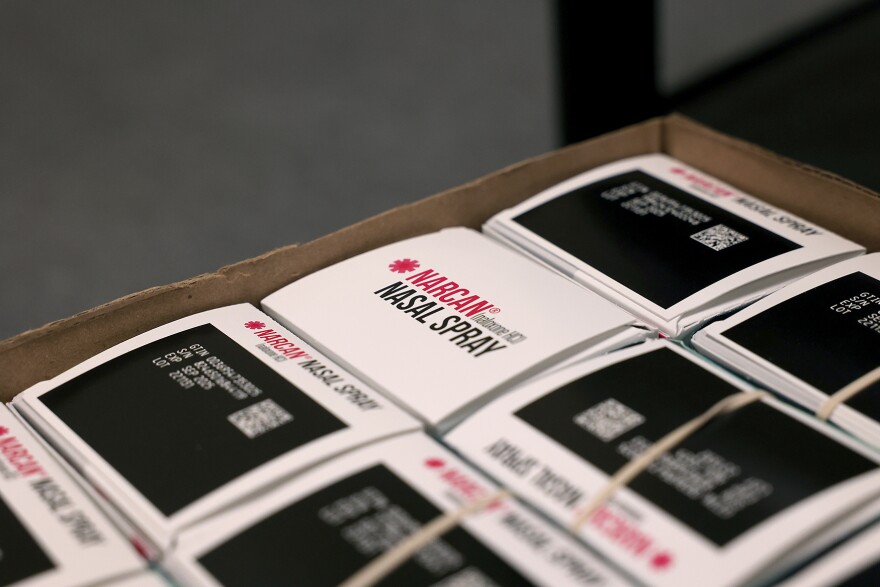


![Hayden Bradley (cq), 10, looks at a container of naloxone nasal spray with Patrick Cosby (cq) during the Save-a-Life event on Wednesday, April 19, 2023, at Missouri United Methodist Church in Columbia. “I think I kind of knew most of the information that was in [the presentation] already,” Cosby said. “It was just a free dose of it was [available], and then you could keep that in the car just in case because it’s a part of our world.”](https://npr.brightspotcdn.com/dims4/default/e63b7f5/2147483647/strip/true/crop/1750x1167+0+0/resize/880x587!/quality/90/?url=http%3A%2F%2Fnpr-brightspot.s3.amazonaws.com%2Ff3%2Ffe%2Fd57b0fd746a0a8b14a7a3b1a2f85%2F20230419-narcantraining-bas-285.jpg)




